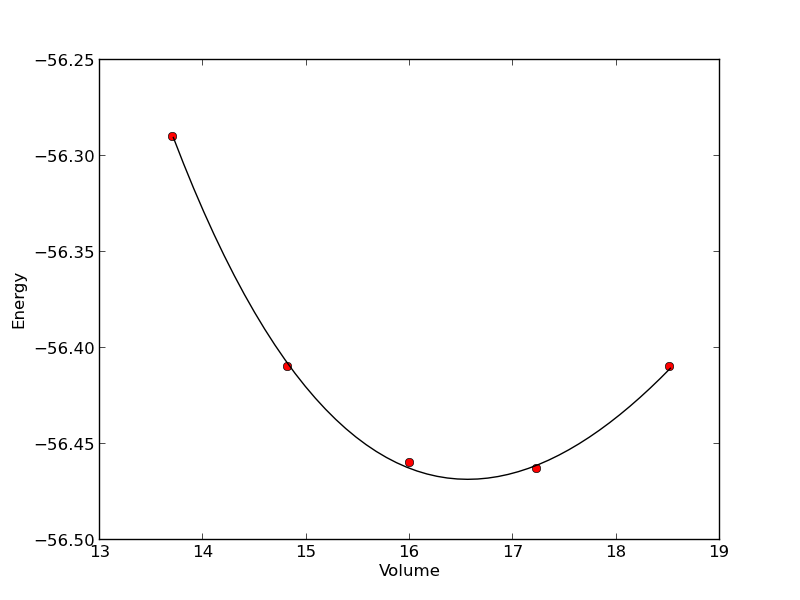Fitting a numerical ODE solution to data
Posted February 18, 2013 at 09:00 AM | categories: nonlinear regression, data analysis | tags:
Updated February 27, 2013 at 02:39 PM
Suppose we know the concentration of A follows this differential equation: \(\frac{dC_A}{dt} = -k C_A\), and we have data we want to fit to it. Here is an example of doing that.
import numpy as np from scipy.optimize import curve_fit from scipy.integrate import odeint # given data we want to fit tspan = [0, 0.1, 0.2, 0.4, 0.8, 1] Ca_data = [2.0081, 1.5512, 1.1903, 0.7160, 0.2562, 0.1495] def fitfunc(t, k): 'Function that returns Ca computed from an ODE for a k' def myode(Ca, t): return -k * Ca Ca0 = Ca_data[0] Casol = odeint(myode, Ca0, t) return Casol[:,0] k_fit, kcov = curve_fit(fitfunc, tspan, Ca_data, p0=1.3) print k_fit tfit = np.linspace(0,1); fit = fitfunc(tfit, k_fit) import matplotlib.pyplot as plt plt.plot(tspan, Ca_data, 'ro', label='data') plt.plot(tfit, fit, 'b-', label='fit') plt.legend(loc='best') plt.savefig('images/ode-fit.png')
[ 2.58893455]

Copyright (C) 2013 by John Kitchin. See the License for information about copying.
